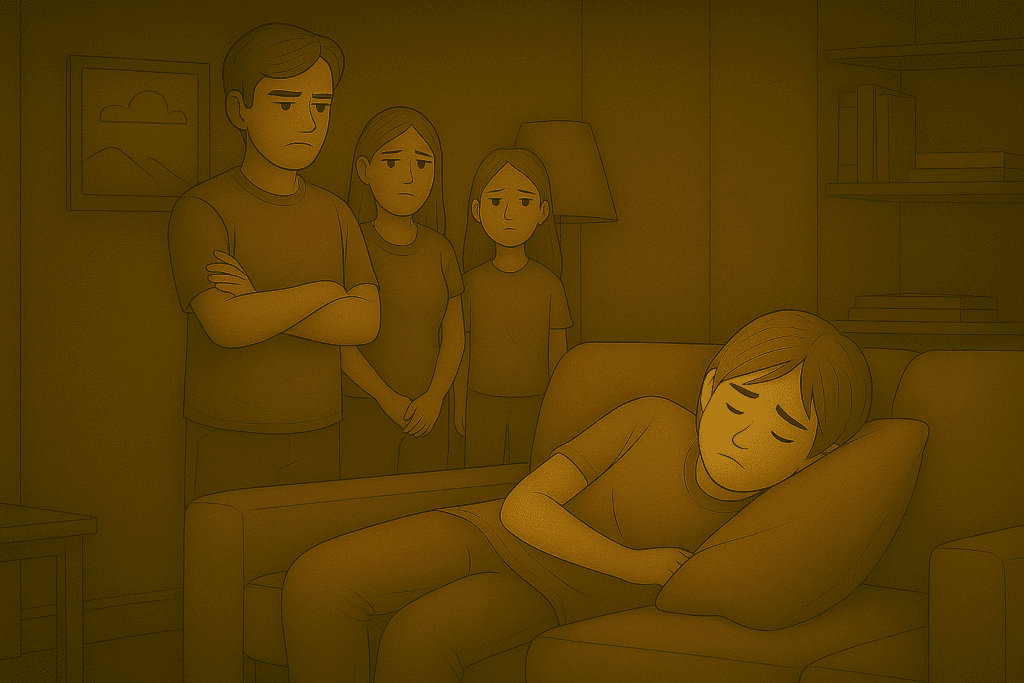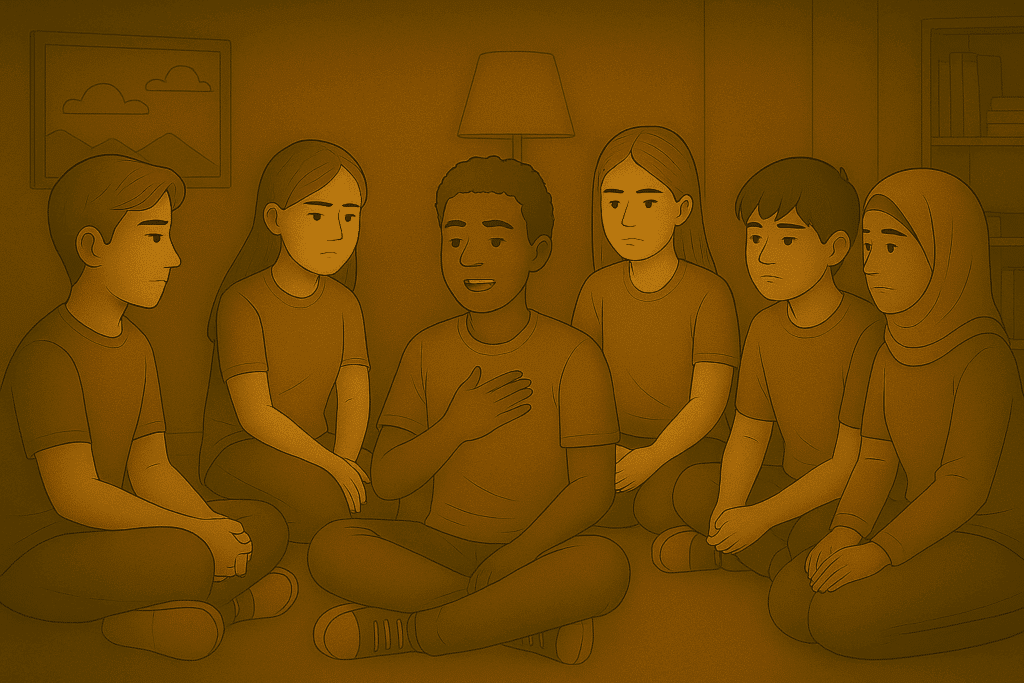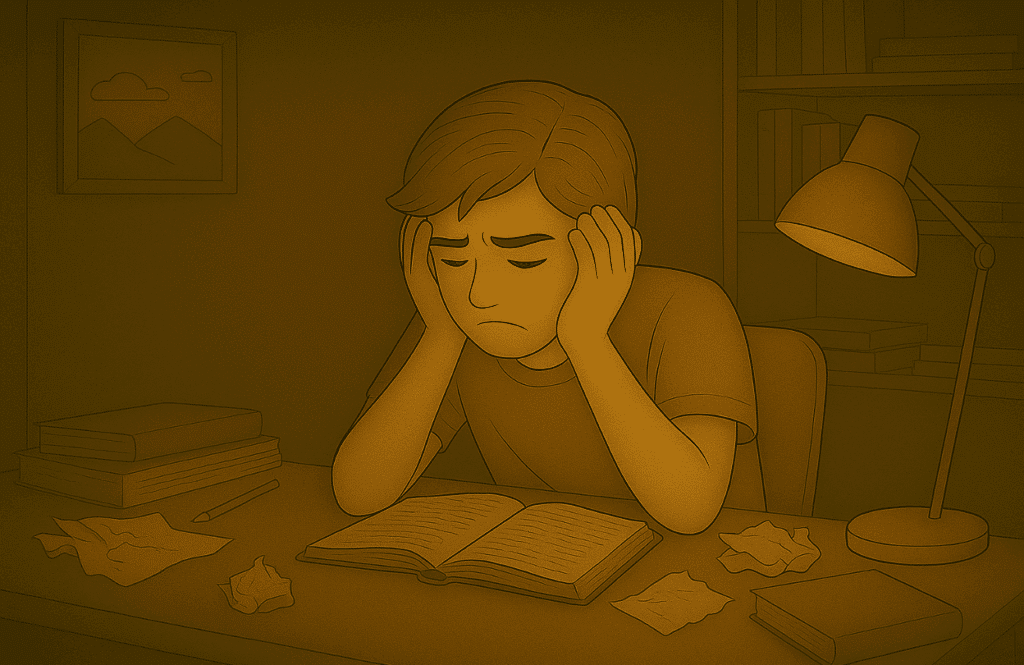Key Takeaways
- Cyclothymia in teens brings recurring highs and lows that last days or weeks, going far beyond typical mood swings.
- Early signs often appear subtle, with unusual energy, impulsivity, or withdrawal, making the condition easy to confuse with ADHD or depression.
- Triggers such as puberty, family history, stress, poor sleep, and social media use can intensify mood shifts.
- Effective care includes therapy, school support, family involvement, healthy routines, and careful use of medication when needed.
- Mission Prep provides specialized teen-focused programs that combine evidence-based therapies, family involvement, academic support, and home-like care to help adolescents build resilience and long-term stability.
What Makes Cyclothymia Different from Teen Mood Swings
Typical teen mood changes often link to specific events, like a poor test grade or weekend excitement, and usually fade quickly. Cyclothymia, by contrast, follows a recurring cycle of highs and lows that last for days or weeks, regardless of circumstances.
For teens, diagnosis requires symptoms lasting at least one year, with no more than two months without them. This sets it apart from the scattered emotional reactions of normal adolescence. Parents often notice their teen’s mood shifts feel more intense and predictable than those of peers.
Another key difference is the impact on daily life. While typical mood swings may cause short-term stress, cyclothymia consistently disrupts school, friendships, and activities, leaving teens excelling in one phase and struggling in another.
Mission Prep Healthcare specializes in mental health treatment for teens aged 12-17, offering residential and outpatient programs for anxiety, depression, trauma, and mood disorders. Our therapies include CBT, DBT, EMDR, and TMS, tailored to each adolescent’s needs.
With a structured, supportive environment, we integrate academic support and family involvement to promote lasting recovery. Our goal is to help teens build resilience and regain confidence in their future.
Early Warning Signs of Cyclothymia in Adolescents
Cyclothymia often develops gradually in adolescence, which makes early recognition difficult. Parents may only realize in hindsight that their teen’s unusual “ups and downs” were consistent patterns, not isolated incidents. These mood shifts are subtle compared to bipolar disorder but persistent enough to disrupt daily life.
Mild Hypomanic Signs
During hypomanic phases, teens may show unusually high energy, need less sleep, or juggle several projects at once. Speech may become rapid, and ideas can jump quickly from topic to topic. Socially, a reserved teen might suddenly act outgoing or impulsive, while others show irritability over small frustrations. Some channel the extra energy into creativity or productivity, which makes symptoms easy to misinterpret as positive personality traits rather than signs of a mood disorder.
Depressive Phases
When the cycle shifts downward, teens often withdraw from activities, lose motivation, or struggle to keep up academically. Grades may drop despite strong performance during hypomanic phases. Sleep problems, too much or too little, are common, along with physical complaints like headaches, stomach issues, or fatigue. These episodes, though milder than major depression, can still take a toll on a teen’s confidence and overall well-being.
Mood Cycle Patterns
Cyclothymia differs from typical teen mood swings in both frequency and duration. Adolescents may experience 3–5 mood shifts per month, sometimes changing within days. Long stretches of stability are rare, and symptoms must persist for at least a year to meet diagnostic criteria. This chronic cycle creates ongoing uncertainty for teens and families, making treatment and support especially important.

Supporting teens through mood challenges starts with understanding and compassion.
Common Triggers for Teenage Cyclothymia
Cyclothymia has a biological basis, but environmental factors strongly influence how symptoms show up. Recognizing these triggers helps families reduce mood swings and support better management.
Biological Influences
Adolescence is marked by major brain changes in areas tied to emotion and impulse control, making teens more vulnerable to mood instability. Neurotransmitter imbalances in dopamine, serotonin, and norepinephrine contribute to cyclothymic shifts. Hormonal surges during puberty often amplify symptoms—girls may notice patterns with menstrual cycles, while boys may feel effects during testosterone fluctuations. Family history also plays a role, with first-degree relatives of those with bipolar spectrum disorders facing a higher risk.
Stress and Environmental Pressures
Academic demands, peer conflicts, and family tensions often act as triggers. Big life changes like moving schools, divorce, or other disruptions can intensify symptoms, especially during already vulnerable phases.
Sleep and Its Role
Sleep issues are both a trigger and a symptom. Late nights, irregular schedules, or heavy screen use can push teens into hypomania, while lack of rest often leads to depressive crashes. Consistent sleep routines are key to breaking this cycle.
Digital and Social Media Impact
Social media can fuel mood swings by overstimulating during hypomania and worsening self-comparison during depression. Impulsive posting or all-night scrolling often destabilizes already fragile mood patterns.
Why Cyclothymia Often Goes Undiagnosed in Teens
Confusion with Normal Teenage Development
Cyclothymia is often mistaken for ordinary teenage mood swings. Emotional highs and lows can seem like a natural part of adolescence, especially when teens still achieve academically or socially during hypomanic phases. Because these shifts don’t always appear disruptive, parents and teachers may assume the teen will simply “grow out of it,” delaying proper diagnosis and treatment.
Misdiagnosis as ADHD or Depression
Symptoms often overlap with other conditions. During hypomanic phases, restlessness, impulsivity, and poor concentration look like ADHD. In depressive phases, low motivation and focus issues resemble depression. Without recognizing the repeating cycle of highs and lows, professionals may provide incomplete diagnoses and treatments, such as prescribing antidepressants without mood stabilizers, which can actually worsen mood swings.
Signs That Warrant Professional Evaluation
Red flags include ongoing mood swings, bursts of energy with little sleep, or sudden shifts in school performance. A family history of bipolar or depression raises the likelihood. Spotting these patterns early allows for timely support and better outcomes.
Effective Treatment Options for Teen Cyclothymia
Getting help early greatly improves outcomes for teens with cyclothymia. The aim is not just to reduce symptoms but to build lifelong skills for managing moods, supporting healthy development, and preventing progression to more severe bipolar disorders. About 70% of teens show real improvement with the right support, even if complete symptom resolution is less common.
Therapies That Work for Teens
Cognitive-behavioral therapy (CBT) helps teens spot mood shifts, challenge negative thinking, and learn regulation skills. Interpersonal and social rhythm therapy (IPSRT) stabilizes daily routines, sleep, meals, activity, reducing mood swings. Dialectical behavior therapy (DBT) gives tools for handling emotional intensity, impulsivity, and relationships more effectively.
School Accommodations and Support
Classroom strategies like flexible deadlines, reduced workload during low phases, and scheduled breaks can make a big difference. Collaboration between teachers, parents, and therapists helps schools respond to symptoms with support rather than discipline.
Family Involvement
Family education reduces conflict, blame, and misunderstanding by teaching the biological roots of cyclothymia. Therapy also improves communication, lowers stress at home, and equips families to spot early warning signs of mood shifts.
Lifestyle Habits for Stability
Consistent sleep routines, regular exercise, and balanced nutrition all support mood regulation. Sleep, in particular, is a key stabilizer, teens benefit from steady bedtimes, reduced screen use before bed, and healthy daily rhythms.
Medication as a Last Step
If symptoms remain severe despite therapy and lifestyle changes, medication may be considered carefully. Mood stabilizers such as lamotrigine are preferred over antidepressants, but any prescription should follow a cautious, individualized approach with close monitoring.
Helping Your Teen Manage Cyclothymia Day-to-Day

Peer support and structured social activities help teens develop meaningful connections.
Creating a Stable Home Environment
Consistent routines, regular meals, chores, and family activities help regulate the biological rhythms behind mood. Parents can support stability by keeping rules steady while adjusting expectations during difficult phases. Modeling stress management, limiting unnecessary commitments, and creating calm spaces at home also reduce triggers and support resilience.
Teaching Mood Tracking and Self-Awareness
Daily mood logs, journaling, or apps help teens spot patterns and early signs of shifts. Learning to identify personal triggers, like poor sleep, conflicts, or academic pressure, lets them intervene earlier. Building a personalized wellness toolkit with exercise, calming strategies, creative outlets, or supportive friends gives teens ready tools to manage symptoms.
Building a Supportive Peer Network
Trusted friends who understand cyclothymia can offer encouragement during lows and grounding during highs. Structured activities such as clubs, volunteering, or sports provide a positive connection with clear routines. These outlets encourage friendships built on shared interests rather than mood-driven behavior, helping teens feel more stable and supported.
When to Seek Emergency Help
While cyclothymia generally involves milder symptoms than other bipolar spectrum disorders, certain situations require immediate intervention. Warning signs necessitating emergency evaluation include suicidal statements or behavior, severe sleep deprivation (3+ days with minimal sleep), psychotic symptoms like hallucinations or delusions, dangerous impulsivity, or complete inability to function in daily activities. Parents should have an emergency plan in place with contact information for mental health crisis services, understanding that prompt intervention during serious episodes prevents harmful consequences and supports faster recovery.
Mission Prep: Helping Teens Find Balance and Hope
At Mission Prep, we know how overwhelming it can be when your teen faces challenges like cyclothymia, anxiety, or depression. That’s why we’ve built a program designed specifically for adolescents aged 12–17, combining clinical expertise with compassion and family-centered care.

Teens at Mission Prep have a voice in their treatment, building confidence and self-advocacy.
Our approach is built on the belief that healing involves the entire family system. Teens are encouraged to have a “vote and voice” in their treatment, fostering empowerment while parents stay actively involved through family therapy and ongoing support.
What we provide for teens and families:
- Specialized Teen Care: Programs exclusively for adolescents, specific to the unique struggles of this age group.
- Comprehensive Levels of Care: Residential, outpatient, and virtual options to fit each family’s needs.
- Evidence-Based Therapies: CBT, EMDR, and even advanced modalities like TMS, combined with creative and holistic practices.
- Academic Integration: Support that helps teens keep up with schoolwork so their education stays on track during treatment.
- Safe, Home-Like Environments: Licensed group homes with semi-private rooms, shared meals, and nurturing spaces.
With a 3:1 staff ratio and a team of highly trained clinicians, we provide personalized attention that prioritizes both clinical progress and emotional safety. Our goal isn’t just short-term improvement but preparing teens with the tools they need for lasting stability and resilience.
For families going through cyclothymia or other mood challenges, Mission Prep offers not just treatment, but a path forward.
Frequently Asked Questions (FAQs)
How is cyclothymia different from bipolar disorder in teenagers?
Cyclothymia involves milder, chronic mood swings, while bipolar disorder has more intense episodes with periods of remission. Teens with cyclothymia experience frequent but less severe fluctuations, leading to persistent daily challenges rather than dramatic disruptions.
Should my teen continue medications if symptoms improve?
Stopping medication too soon often causes relapse. If symptoms stabilize for 12–18 months, tapering may be considered under close supervision. Decisions should always be guided by a doctor and supported with non-medication strategies.
How do I talk to my teen about their cyclothymia diagnosis?
Frame cyclothymia as a manageable health condition, not a flaw. Use age-appropriate explanations, highlight treatment success, and keep communication open. Normalize their feelings, celebrate progress, and remind them that the diagnosis doesn’t define their potential.
Can teens with cyclothymia participate in normal activities like sports and travel?
Yes, with planning. Sports can help mood regulation, though irregular schedules may need adjustments. Travel is possible with consistent routines, sleep care, and medication planning. The goal is full participation with tailored support.
Can cyclothymia in teens go away on its own?
Cyclothymia rarely resolves without help. About 30–40% see improvement, but usually with treatment. Without intervention, it often persists or progresses. Early, active management, through comprehensive programs like those we offer at Mission Prep, provides the best chance for lasting stability and healthier mood regulation.















